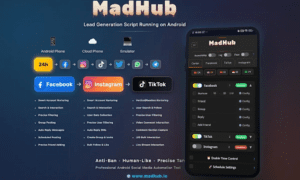The rapid growth of the technology sector in Texas is transforming the state’s real estate landscape in profound ways. As tech giants continue to relocate or expand their operations in Texas, cities like Austin, Dallas, and Houston are witnessing a surge in demand for commercial and residential properties. This shift is reshaping the real estate market, affecting everything from property values to urban development patterns.
The Influx of Tech Companies to Texas
Why Tech Giants Are Choosing Texas
One of the primary reasons tech companies are flocking to Texas is its favorable business environment. Texas offers a combination of low taxes, less regulation, and a business-friendly climate, making it an attractive destination for companies looking to scale their operations. In addition to financial incentives, Texas’s relatively affordable cost of living compared to other tech hubs like California is another major draw for both companies and employees.
Austin, in particular, has become a magnet for tech firms. Dubbed “Silicon Hills,” Austin’s combination of innovation, talent, and lifestyle appeal has attracted major companies such as Tesla, Apple, Google, and Oracle. This influx of tech giants is driving real estate development at an unprecedented pace.
Population Growth and Migration Patterns
As tech companies set up shop in Texas, the state is experiencing significant population growth. Workers from traditional tech hubs like Silicon Valley and Seattle are relocating to cities like Austin, Dallas, and Houston. In fact, according to a report from the Texas Real Estate Research Center, Texas gained nearly 374,000 new residents in 2020 alone.
This population surge is driving demand for housing, pushing real estate prices upward. As more tech workers move to Texas, the need for both residential and commercial properties has increased, causing the real estate market to heat up.
Commercial Real Estate Boom
Expanding Office Spaces
One of the most direct ways tech companies are influencing Texas’s real estate market is through the demand for office spaces. As companies expand their operations, they require larger, state-of-the-art office spaces to accommodate their growing workforce. Cities like Austin and Dallas have seen a spike in demand for Class A office spaces, which offer premium amenities and locations.
In Austin, for instance, Oracle’s 40-acre campus on the banks of Lady Bird Lake is a prime example of the scale of tech-related real estate developments. Similarly, Google’s new downtown Austin tower and Apple’s $1 billion campus are reshaping the city’s skyline and driving commercial property values up.
Dallas, too, is experiencing a commercial real estate boom. Tech companies are leasing significant amounts of office space in areas like the Legacy West development in Plano, home to Toyota and other major companies. The expansion of tech firms in these areas is driving up commercial real estate prices and prompting new developments to keep up with demand.
Co-Working Spaces and Flexible Offices
The rise of tech startups and remote work is also changing the commercial real estate landscape. Many smaller tech firms and startups are opting for co-working spaces and flexible office solutions. These spaces allow companies to rent desks or offices on a short-term basis, offering more flexibility than traditional leases.
In cities like Austin, Houston, and Dallas, co-working companies like WeWork, Industrious, and Regus are capitalizing on the demand for flexible office spaces. This trend is particularly attractive to startups that need to scale quickly without committing to long-term leases. As the demand for co-working spaces grows, developers are responding by incorporating these types of offices into new commercial real estate projects.
Residential Real Estate: Surging Demand and Rising Prices
Housing Market Tightness
The influx of tech companies and their employees is putting significant pressure on the residential real estate market. In cities like Austin, housing inventory is tight, and prices are soaring. According to the Austin Board of Realtors, the median home price in Austin reached $515,000 in 2021, an all-time high. This represents a 30% year-over-year increase, fueled in large part by the growing tech sector.
With tech employees often earning higher-than-average salaries, they are able to outbid other buyers, further driving up home prices. This surge in demand is not limited to Austin. Dallas and Houston are also seeing significant appreciation in home values, particularly in areas near tech company campuses.
Urbanization and Suburban Growth
Tech companies are not only driving demand for housing in urban centers; they are also influencing suburban growth. As urban home prices skyrocket, many tech workers are opting to live in nearby suburbs, where housing is more affordable. Suburbs like Round Rock and Pflugerville in Austin, The Colony in Dallas, and Katy in Houston are becoming increasingly popular among tech workers.
This suburban migration is sparking new real estate developments in these areas, including master-planned communities and mixed-use developments that offer both residential and commercial spaces. Developers are building luxury apartment complexes, townhomes, and single-family homes to meet the growing demand from tech workers seeking more space and amenities.
The Rental Market
The demand for rental properties is also on the rise as tech companies continue to expand. In cities like Austin and Dallas, rental prices have surged, particularly in areas close to tech campuses. Many tech workers are opting to rent rather than buy, either because they are relocating temporarily or because home prices have become unaffordable.
Developers are responding by building high-end rental properties that cater to tech workers. These luxury apartments often feature amenities like fitness centers, coworking spaces, and rooftop lounges. As the demand for rentals grows, rental rates continue to climb, making it challenging for lower-income residents to find affordable housing.
The Role of Tech Companies in Urban Development
Smart Cities and Innovation Districts
Tech companies are not only reshaping the real estate market through their demand for office and residential spaces; they are also playing a role in the development of smart cities and innovation districts. These are urban areas designed to integrate cutting-edge technology, sustainability, and innovation into city planning and infrastructure.
Austin’s “Innovation District,” located in the heart of downtown, is a prime example of this trend. Anchored by the University of Texas and a number of tech companies, the district aims to foster collaboration between academia, tech startups, and established companies. This development is driving both commercial and residential real estate growth in the area.
Smart city initiatives, such as the use of IoT (Internet of Things) technology for traffic management, energy efficiency, and public safety, are also gaining traction in cities like Dallas and Houston. Tech companies are partnering with local governments to implement these innovations, further shaping the real estate market as urban planners prioritize smart infrastructure in new developments.
Sustainable Real Estate Development
Sustainability is becoming an increasingly important factor in real estate development, especially as tech companies prioritize environmental responsibility. Many tech firms are advocating for green building practices, energy-efficient designs, and environmentally friendly infrastructure. As a result, new real estate developments in Texas are incorporating sustainable features such as solar panels, rainwater harvesting systems, and LEED-certified buildings.
Apple’s new campus in Austin, for example, will be powered entirely by renewable energy. Similarly, Tesla’s Gigafactory in Austin is designed with sustainability in mind, featuring extensive solar power and water recycling systems. These eco-friendly developments are setting a new standard for real estate in Texas, encouraging other developers to follow suit.
Long-Term Implications for Texas’s Real Estate Market
Real Estate Speculation and Investment
The tech boom in Texas is attracting real estate investors looking to capitalize on the state’s rapid growth. As property values continue to rise, both residential and commercial real estate have become attractive investment opportunities. Real estate speculation is particularly prevalent in cities like Austin, where investors are buying up properties in anticipation of further appreciation.
While this influx of investment is driving economic growth, it is also contributing to the affordability crisis in some areas. As more investors enter the market, the supply of affordable housing is shrinking, making it harder for middle- and lower-income residents to find homes.
Potential Market Corrections
While the real estate market in Texas is currently booming, some analysts warn that it could face a correction in the future. The rapid pace of development and rising property values may not be sustainable in the long term, particularly if the tech sector experiences a downturn. A slowdown in tech-related job growth or an economic recession could lead to a cooling of the real estate market.
However, even if there is a correction, the long-term outlook for Texas’s real estate market remains strong. The state’s diversified economy, combined with its appeal to tech companies, positions it well for continued growth in the coming years.
Conclusion
The influence of tech companies on Texas’s real estate market is undeniable. As more tech firms move to the state, they are driving demand for both commercial and residential properties, reshaping urban and suburban development patterns. While this growth presents opportunities for real estate investors and developers, it also poses challenges in terms of affordability and sustainability. Ultimately, the continued success of Texas’s real estate market will depend on its ability to balance growth with the needs of its residents and the change demands of the tech sector.



































